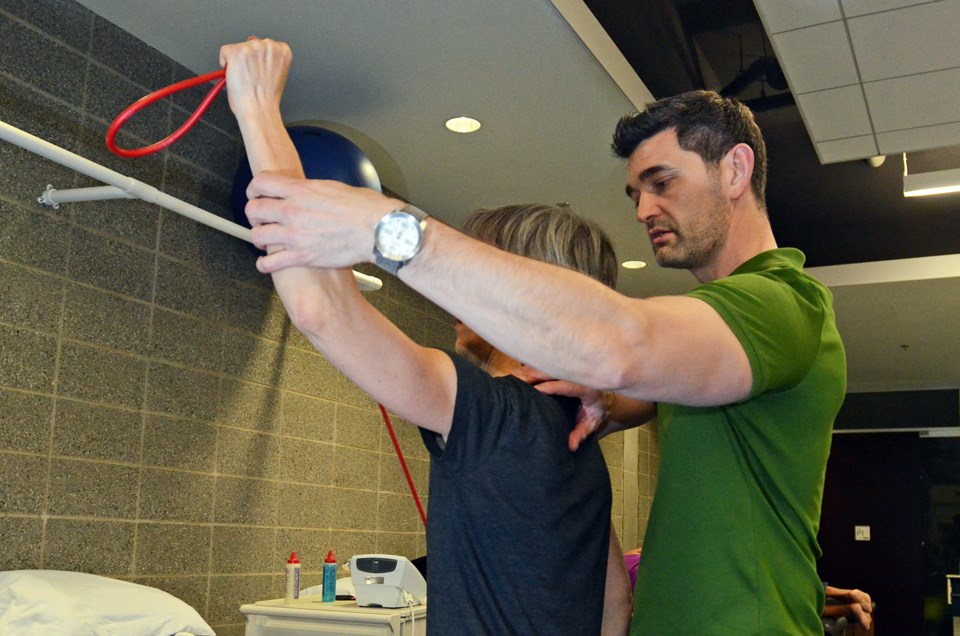For 14 weeks, NOW health reporter Cornelia Naylor has been assigned to undertake a “Fortius challenge,” setting fitness and performance goals and experiencing first-hand the many ways Burnaby’s Fortius Sport & Health can help.
As a rehab project, the team will zero in on a lingering shoulder injury, but Naylor will also get a chance to sample everything else Fortius has to offer, from massage therapy to diet advice and from vision testing to a scientific analysis of her running gait.
Here’s her second report:
I’m at Fortius looking forward to my first physiotherapy appointment, which I’ve been told will include a “musculoskeletal assessment.”
Whatever it is, it sounds thorough, and at age 47, my musculoskeleton is due for some kind of state-of-the-union once-over.
Like all the therapy rooms at Fortius, my room has sliding doors on either end – one opening onto a corridor, the other onto a therapy area lined with mirrors, exercise machinery, fitness balls, a row of physio beds and lengths of rubber tubing dangling everywhere.
Mike Foster, a longtime local physiotherapist who joined Fortius Sport & Health when it opened in May 2013, saunters in from the busy room and slides the door closed behind him.
Turns out my whole musculoskeleton is not on the menu.
My right shoulder, however, is scrutinized at every angle and in every position, and will apparently give us plenty to work on.
“I can get my finger right in there,” says Foster poking his finger between my shoulder blade and back ribs. “We need to get these muscles stronger.”
Seems I’m not supposed to be able to hook my right shoulder blade (which looks a little like a bony flipper when I poke it out) over the back of my chair.
“Your rotator cuff is not bad, but your shoulder blade is weak,” Foster says.
Grabbing the plastic model of my already familiar new friend, glenohumeral joint, Foster reiterates what Fortius sport doctor Jason Crookham has told me about my too-mobile shoulder.
“Your rotator cuff is four different muscles that come from here and wrap around into your shoulder,” Foster says, “and when those are coordinated and working well with your shoulder blade muscles, your ball stays in the middle of the socket. If any of those muscles are weak or irritated, this will move around too much and will cause pain.”
Forster and I move into the therapy area for the second half of our session, and my rehab commences with four shoulder strengthening exercises.
They are, in the words of my son (a university football player who’s inherited his mom’s lax shoulders and already been through physio) “surprisingly lame.”
For one of them, I lie on my back with my arm straight in the air and move it in tiny circles.
Doing these exercises faithfully over the next few weeks, I am told, will be the key to my recovery – not bionic implants, but tiny circles in the air.
During our session I ask Foster – who has rehabbed pros and recreational athletes alike – what the hardest part of his job is.
He answers without hesitation.
“Unmotivated people,” he says. “If people aren’t motivated and not doing what they’re supposed to do, they’re not going to get better.”
That’s not me, of course, but I leave Fortius with some low-level foreboding nonetheless.
Next stop, massage therapy.
Follow Cornelia Naylor’s road to recovery online at www.burnabynow.com.
Want to comment? You can also find her on Twitter, @CorNaylor.



